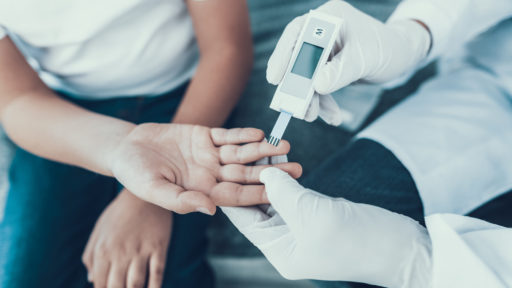Also called: Adult-Onset Diabetes
In the United States, 30.3 million children and adults have diabetes. This is about 1 in 10 Americans. Amazingly, 1 in 4 people with diabetes don’t realize they have it.
95% of those with diabetes have type 2 diabetes. Though it was formerly classified as “adult-onset diabetes”, it is increasingly being discovered in children and adolescents related to the epidemic of obesity in youth.
Type 2 diabetes is a metabolic disorder caused by the body’s inability to make enough insulin or properly use the insulin that it makes. Insulin is a hormone that removes glucose from the bloodstream. If you don’t make enough of it or are resistant to it, your blood glucose (sugar) will be too high. Elevated blood glucose over time can lead to damage to the blood vessels, eyes, kidneys and nerves. In individuals with type 2 diabetes, fat, liver and muscle cells are resistant to insulin. Early on in type 2 diabetes, the body is able to compensate for this resistance by making more insulin but this ability decreases over time.
Causes of Type 2 Diabetes
There is not a single cause of type 2 diabetes. There are many genetic, social, and environmental factors that play a role. While you can inherit a tendency to develop the condition, excessive weight gain and/or physical inactivity can increase the risk of developing type 2 diabetes. Studies have shown that controlling your body weight, eating a healthy diet, and regular exercise can prevent or delay type 2 diabetes even in those who are genetically predisposed.
Risk Factors and Symptoms for Type 2 Diabetes
Risk factors for type 2 diabetes include but are not limited to the following:
- Age – those 45 or older are at a higher risk
- Family history of diabetes
- Being overweight (body mass index of >25 kg/m2 or >23 kg/m2 in Asian Americans)
- Physical inactivity
- Race and ethnicity – African-Americans, Hispanic Americans, Asian Americans, and American Indians are at a higher risk
- History of gestational diabetes
- History of polycystic ovarian syndrome (PCOS)
- A low HDL level
- A high triglyceride level
Each person may experience the symptoms of type 2 diabetes differently. Often, those with type 2 diabetes have no symptoms at first and may not for many years. The most common symptoms include but are not limited to:
- Increased thirst
- Frequent urination
- Weight loss despite not adhering to a strict diet or exercise regimen
- Frequent bladder or skin infections
- Blurred vision
- Nausea and vomiting
- Extreme weakness and fatigue
- Irritability and mood changes
- Dry, itchy skin
- Tingling or loss of feeling in the hands or feet
- Cuts or injuries that heal slowly
Managing Your Type 2 Diabetes
Often, type 2 diabetes can be controlled through weight loss, improved nutrition and exercise alone. However, in some cases, these measures are not enough and oral or injected medications are necessary.
Treatment often includes:
- Lower carbohydrate diet
- Exercise program (150 minutes of moderate physical activity weekly)
- Gradual weight loss (goal is 5-10% weight loss if you are overweight or obese)
- Medications
- Regular follow up with your primary care doctor and eye doctor (ophthalmologist) and possibly a nutritionist or diabetes educator, an endocrinologist who specializes in diabetes, kidney doctor (nephrologist), foot doctor (podiatrist), and heart doctor (cardiologist)
To prevent type 2 diabetes, especially if you have been diagnosed previously with pre-diabetes or “borderline” diabetes, it is important to keep a healthy body weight and an active lifestyle.

























